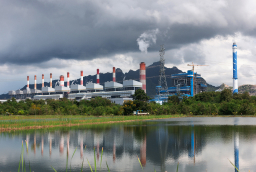SO2 and Particulate Removal, including Arsenic to non-detectable levels
A new tungsten mine was being developed in southern England. The new plant included a reduction kiln that generated flue gases containing particulate, SO2 and Arsenic.The facility was located near town and required extremely low emissions for SO2 and especially arsenic.
Arsenic is highly toxic in its inorganic form and is linked with increased risks of cancer and other health effects.
Solution
The multi-national EPC contractor sourced bids from mostly EU suppliers and entered into an agreement to proceed with a local supplier, however during the preliminary design, confidence levels that the gas clean up supplier could meet the emissions requirements eroded and the customer contacted Macrotek. Macrotek proposed a unique and innovative custom-designed solution.
The plant requirements were for Best Available Technology (BAT) for acid gas removal and Best Available Control Technology (BACT) for particulate. The wet scrubber or packed column absorber was BACT for mass transfer and acid removal, and the dust collector was BACT for particulate. These technologies are often implemented separately since combining them in a single system presents many operating challenges (particularly wet baghouse operation).
Flue gases from the reduction kiln were around 1000C and required cooling and conditioning. The arsenic presented a specific challenge because of vapour pressure and the fraction of milligram outlet emission levels required. Macrotek designed a system that included a wet quench-conditioning section followed by a wet scrubber in the form of a counter-current packed column absorber. Sub-cooling and mass transfer occurred in this zone. Sub-cooled gases were then re-heated and conditioned to be introduced in the baghouse dust collection system. To meet the ultra-clean arsenic emission levels, the dust collector included secondary cleaning or multiple stage HEPA filters.




